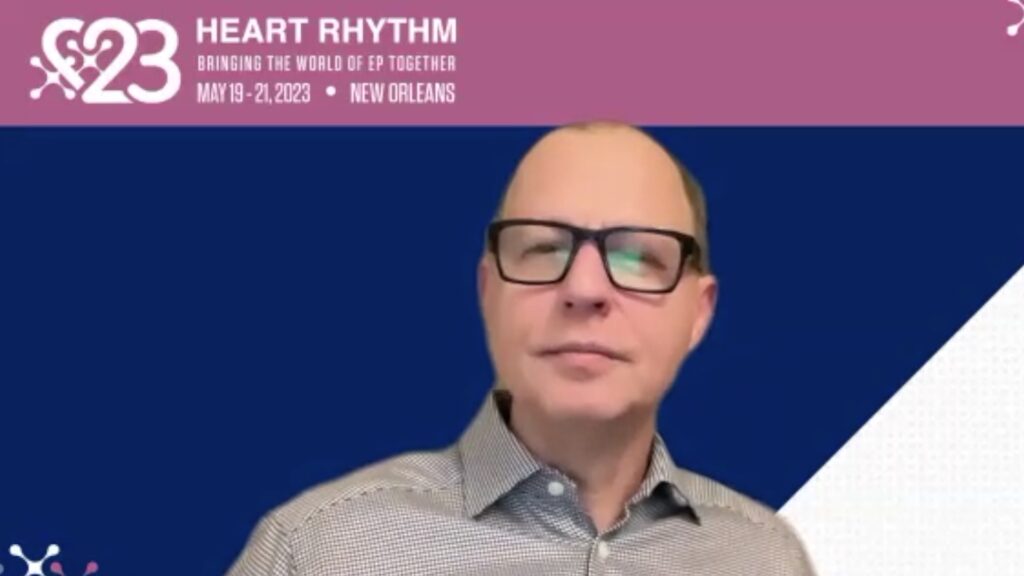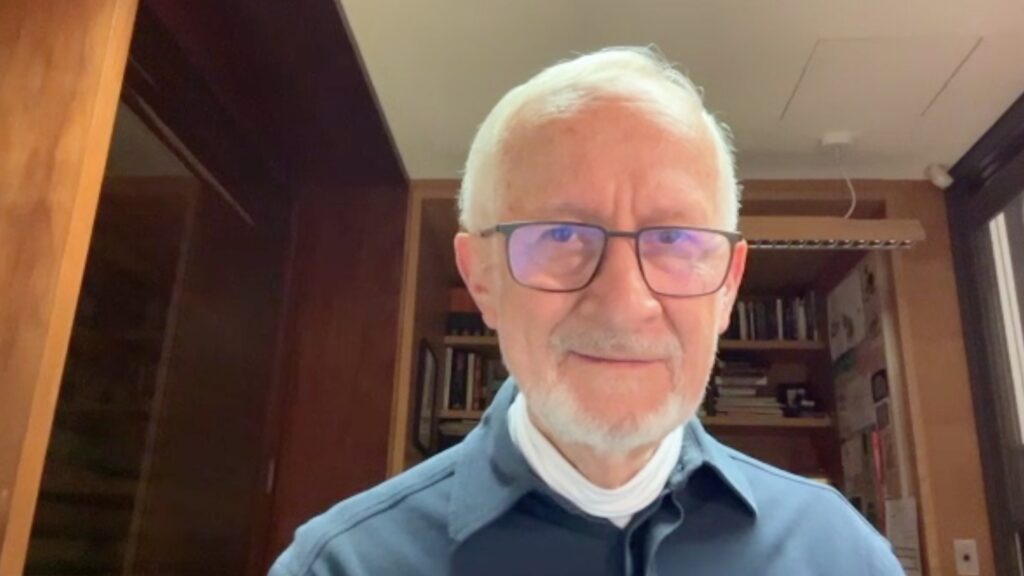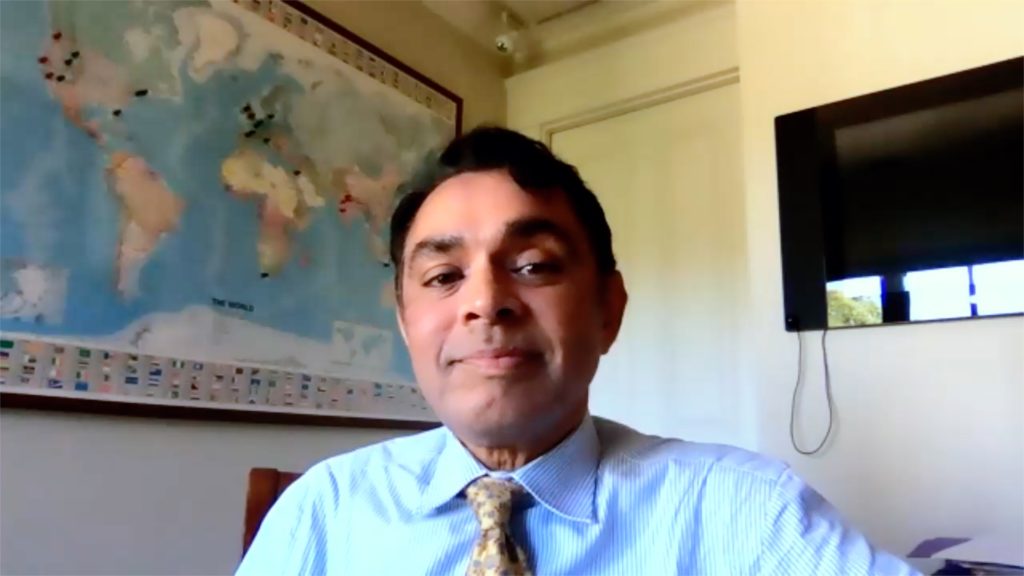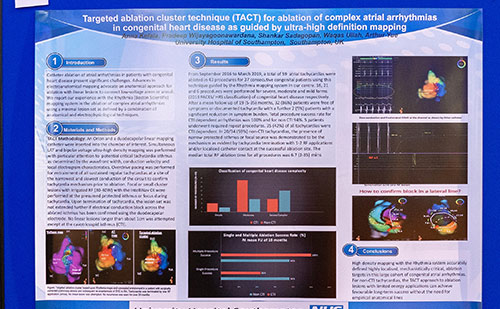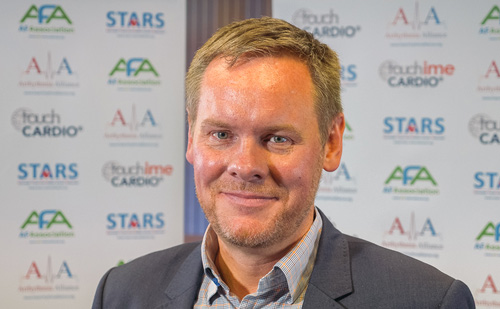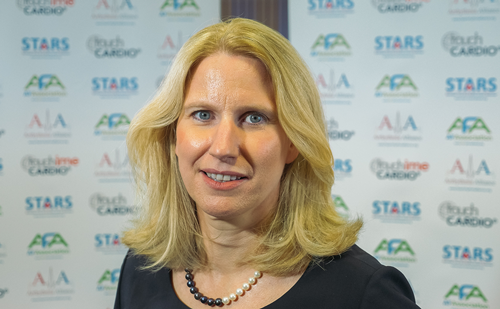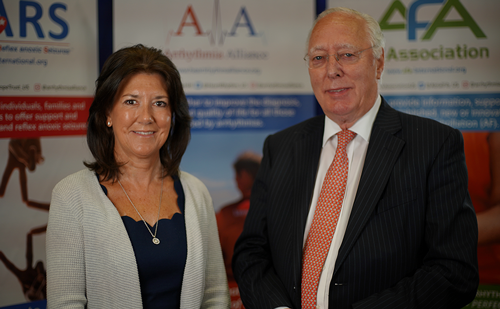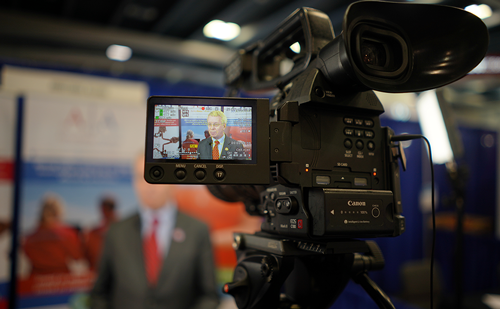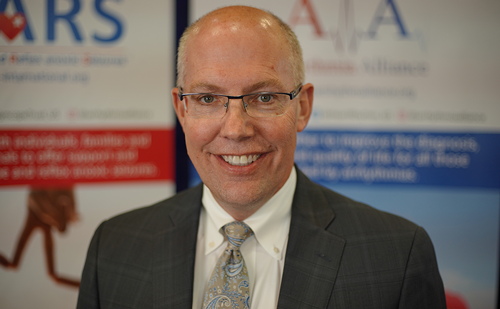The third European Pacing Symposium (EPS) meeting took place on Friday 1 December 2023 in London, UK. The event, which brings together an international faculty to discuss the latest advances in cardiac pacing and implantable cardioverter-defibrillators (ICDs) provides attendees with practical sessions and examines some of the most recent findings and techniques in the field.
To gain deeper insights into the specific objectives of the meeting and its key highlights, we had the privilege of speaking with Dr Zachary Whinnett (Imperial College London, UK), the course director. Our discussion covered the symposium’s multifaceted agenda, which featured discussions on conduction system pacing and the exploration of novel pacemaker therapy applications in various patient cohorts. Noteworthy sessions included an examination of the role of pacing therapy in patients with heart failure with preserved ejection fraction. The symposium also spotlighted a dynamic young investigator competition and engaging debates on pacing therapy strategies. Additionally, Dr. Whinnett provided insights into sessions focusing on the interaction between pacing leads and the tricuspid valve, as well as emerging research on Bachman’s bundle pacing. These discussions underscored the symposium’s commitment to advancing the field of cardiac pacing through collaboration and innovation, leaving attendees with a sense of optimism for future developments.
Questions
- Could you tell us about the key objectives of the EPS meeting this year and how well you think those objectives were achieved? (0.23)
- Reflecting on the event, what would you identify as the top three highlights or key moments from the meeting? (2.47)
Disclosures: Dr Whinnet has acted as a consultant for Medtronic, received grant/research support from the British Heart Foundation, participated on the advisory board for Abbott, Medtronic and received honoraria from Medtronic.
Support: Interview and filming supported by Touch Medical Media. Interview conducted by Gina Furnival.
To learn more visit:https://heartrhythmalliance.org/aa/uk/aa/uk/events/medical-professional/european-pacing-symposium-2023
Click here for further electrophysiology content. Interview and filming supported by Touch Medical Media. Interview conducted by Gina Furnival.
Transcript
My name is Zachary Whinnett, I’m a consultant cardiologist based at Imperial College London. I’ve been the co-chair for the European Pacing Symposium, along with Dr Francesco Zanon from Ruvigo, Italy.
Question: Could you tell us about the key objectives of the EPS meeting this year and how well you think those objectives were achieved?
So this year was our third year of the European Pacing Symposium and we had a fantastic faculty of 35 expert speakers from around the world, and there were this year, as in the previous two editions there was a very strong focus on conducting system pacing as it is such a hot topic in the field of pacing.
We had several sessions on conduction system pacing. We also had a nice session on examining the role of whether pacemaker therapy can be extended to other populations of patients. For example, for patients with a prolonged PR interval. Dr Daniel Keene gave a very nice talk on that. But we had a session on whether there is a role for pacing therapy in patients with heart failure with preserved ejection fraction, which is an extremely hot topic. Prof. Kevin Vernooy from Maastricht gave a very good overview of that topic. We had a young investigator competition, we had four fantastic young investigators present.
And, we had a really interesting debate on the role of pacing therapy, ablate-and-pace therapy in patients with atrial fibrillation and left ventricular impairments. So we had a debate on whether AF ablation should be the first line therapy or whether in which population of patients we should look at ablate-and-pace approach. Prof. Aldo Rinaldi and Prof. Bernard Abi-Saleh gave that debate.
So overall, it was a really enjoyable day. We had a full house of attendees who were all really very engaged. And I personally felt the objectives were very well met. We had lots of positive feedback from the people who attended the congress, and we are really looking forward to, next year’s meeting.
Question: Reflecting on the event, what would you identify as the top three highlights or key moments from the meeting?
We had a session on the tricuspid valve and the interaction with pacing leads on a tricuspid valve. So, Prof. Mario Oliveira, from Portugal, gave us an overview of the incidence of tricuspid regurgitation, which of course, is something that we are aware of but often previously has been relatively ignored.
Dr Pablo Merenai gave us a really good talk on how to try and avoid the complication, and then Dr David Žižek, from Slovenia, gave us a discussion about lead management, at the time of interventions on the tricuspid valve, which of course is a very hot topic at the moment, and gave us a really good overview about whether we should consider extraction, and when we should consider extraction and also what to do prior to valve intervention. So that was a really interesting and provocative session.
The conduction system pacing sessions, as in previous meetings, were very well received. We discussed areas where we think future trials should be taking place. So we discussed the the big randomized trials such as PROTECT-HF and Left vs Left study, which are ongoing. But also we discussed whether we needed to think about other populations of patients. For example, patients with atrial fibrillation, and patients with heart failure with reduced ejection fraction. So there are some collaborations that I think will come from the meeting.
Another interesting topic was the discussion about Bachman’s bundle pacing, Dr Carsten Israel gave a very nice talk on the practicalities of how to deliver conduction system pacing into the atrium, as well as discussing the evidence that is available so far for this, but what we realized is clearly quite a lot of scope for further research in this area, and that was something that was also discussed amongst the attendees as well as the expert faculty.
This transcript was autogenerated and then edited for clarity.


